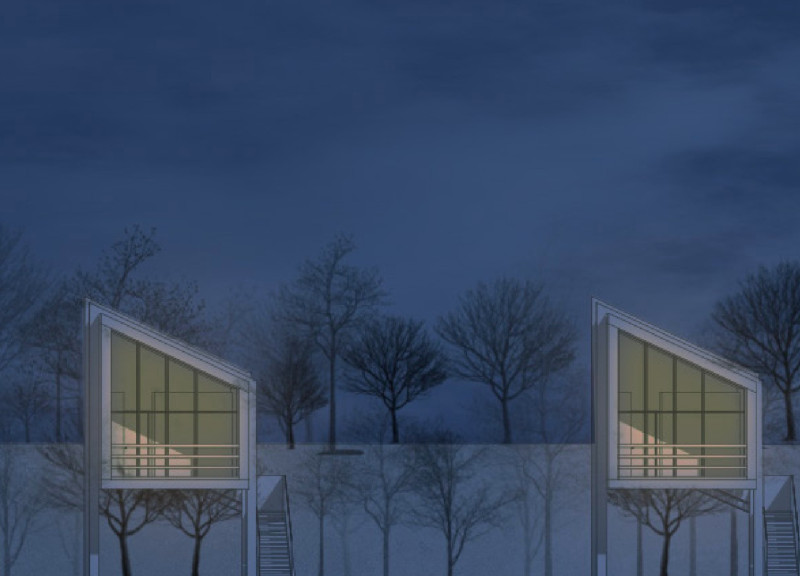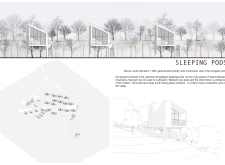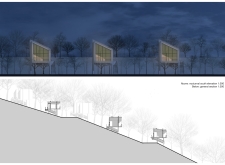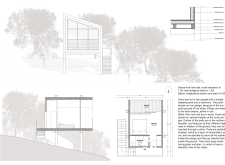5 key facts about this project
The sleeping pods project is located in the Vale de Moses mountains, an area characterized by rocky terrain that is not suitable for farming. Eighteen individual sleeping pods are designed to offer a minimalist living experience in a natural setting. Each pod includes essential features like a sleeping area and a bathroom, promoting both comfort and practicality. The overall design focuses on blending the structures with the landscape while supporting sustainable living.
Location and Spatial Organization
The pods are thoughtfully spaced ten meters apart to provide privacy while ensuring easy access. Each one is placed at different heights, allowing for stunning views of the valley below. With large south-facing glass surfaces, the pods take full advantage of natural light, inviting the landscape inside. Entries on the northern sides are accessed by stairs, accommodating the slope and enhancing the accessibility of each unit.
Structural Considerations
To maintain stability on the uneven ground, the pods are elevated on iron pilings that connect to the main structural elements. This approach minimizes disruption to the natural environment while providing a solid base for the lightweight design. The choice of iron as a support material reflects attention to site-specific challenges, balancing functionality with aesthetic considerations.
Materials and Insulation
Effective insulation is achieved through the use of Isosandwich panels, which help regulate temperature inside the pods. This is crucial in a mountainous area where temperatures can vary widely. Essential systems are also integrated within the pilings, ensuring that the design remains clean and respectful of the surrounding landscape.
Design Aesthetic
The sleeping pods feature a contemporary design that emphasizes function and harmony with nature. Their simple forms invite occupants to connect with their surroundings. The arrangement of the spaces encourages relaxation and a retreat from the busyness of everyday life. Each pod serves as a quiet place to reflect and appreciate the beauty of the natural world, providing a unique experience that fosters a connection between the inhabitants and the landscape.





















































